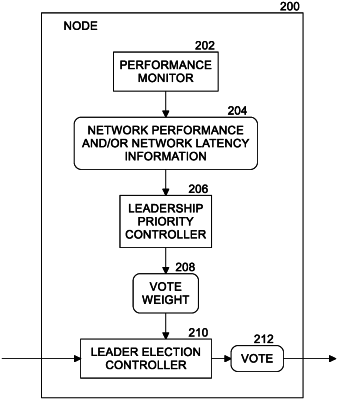| CPC G06F 11/1425 (2013.01) [G06F 9/5072 (2013.01); G06F 9/5077 (2013.01); G06F 9/5083 (2013.01); G06F 18/23213 (2023.01); G06F 11/187 (2013.01); G06F 2209/505 (2013.01); G06F 2209/508 (2013.01)] | 20 Claims |

|
1. A method comprising:
categorizing a plurality of nodes into at least two clusters based on at least one of a geographic location of the plurality of nodes or a round trip time (RTT) between the plurality of nodes, wherein the plurality of nodes is coupled in communication via a network in a distributed computer system;
setting a leadership priority for each node based at least in part on a respective cluster of the at least two clusters, each node having a vote weight based at least in part on the leadership priority of the node, a vote of each node being biased by the vote weight of the node; and
selecting one of the plurality of nodes to become a leader node during an election, the selected leader node receiving a number of votes higher than a maximum possible number of votes biased by respective vote weights received by any other node in the cluster.
|